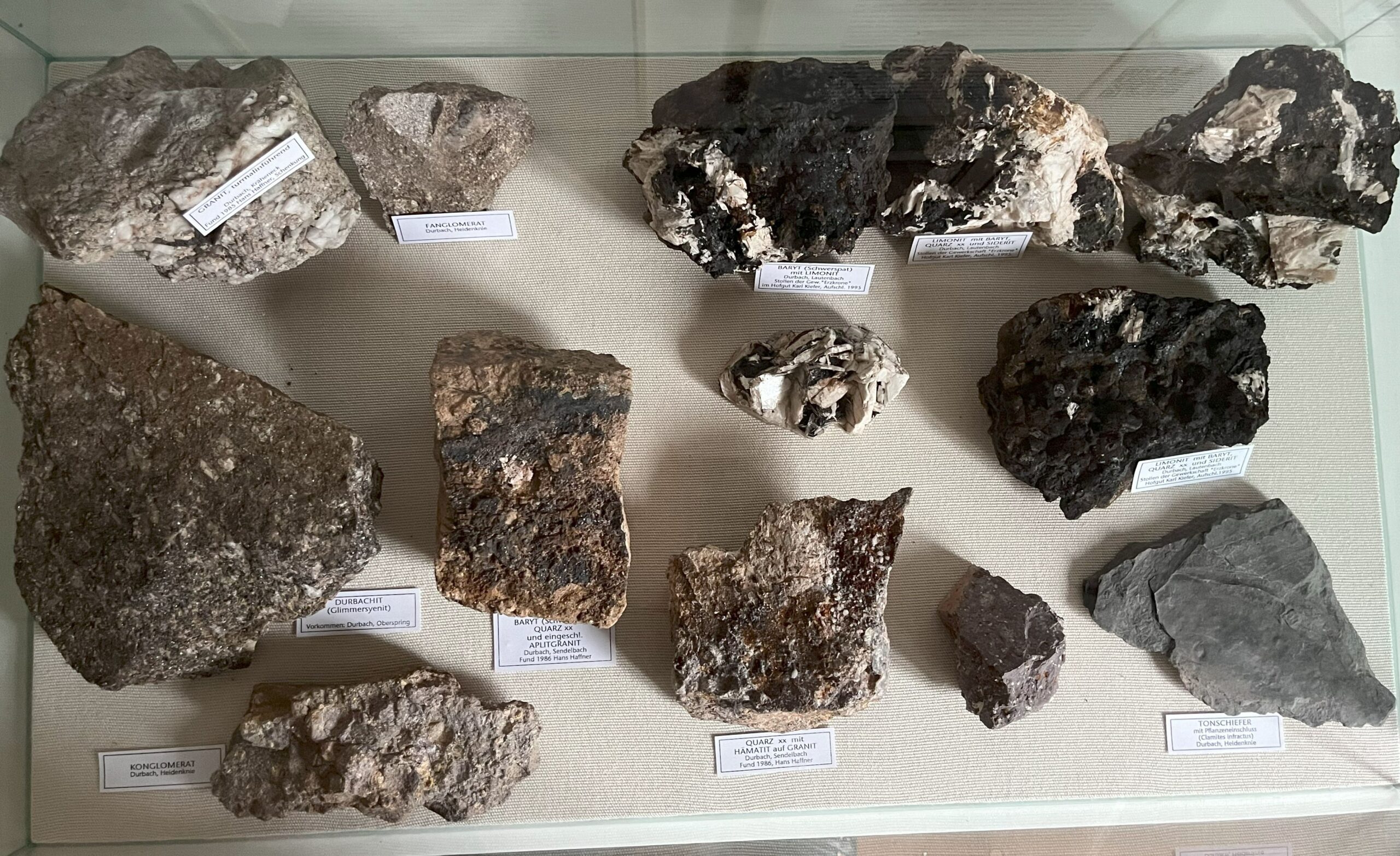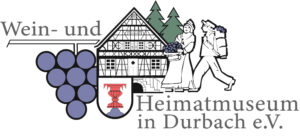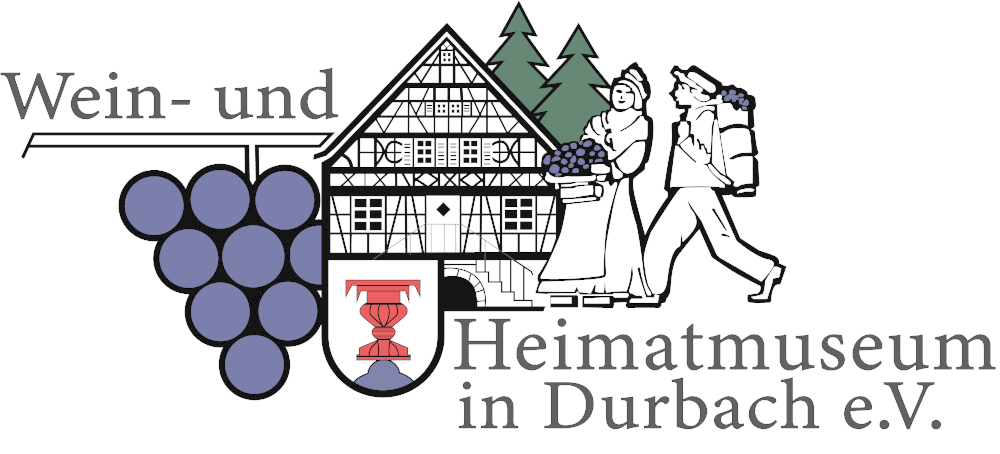212 Geologie

The display cabinets exhibit only rocks and minerals from the Durbach valley. The soil and stone have a significant influence on the wine that is growing here. Nearly every ridge consists of different rock types, which will lend wines from different areas a unique character. …
In Durbach, weathered granite soil makes up the most part, the ground absorbs heat during the day and releases it during the night, but also retains enough water for the vine.
Durbach has no precious gemstones, but agates from the Plauelrain region and Stöckberg are appealing, nevertheless. They were found during levelling works as part of land consolidation on the Plauelrain. It is impressive how diverse rocks can be. Barite, for example, can be found at the front of the Plauelrainer Köpfle, as well as the back of the Lautenbachtal, where barite was extracted from several mines for numerous years in the 1930s.
These beautiful pieces of sparstone, containing a substantial proportion of ore, were extracted from an old ore mine in early 1995, which was closed again for security reasons. Geologists have a particular interest in the area around the Heidenknie. There we find around ten different types of rock in a relatively small area. An interesting fact is that, for example, this type of argillaceous shale, which sometimes even contains plant fossils, can be found at 500 metres above sea level, and only in an area of 400 m². This pickaxe, as well as the mining tools, come from the old barite plant. Inside this display cabinet, you can see the carbide-mining-lamp, which was presumably still used in the St. Anton mine.
One stone that, in theory, is rather insignificant bears the name Durbachit, named after Durbach, and can be found in the area between Obertal and Renchtal.
In the area of Hohberg (Enderleskopf) a vein with beautiful fluorite can be witnessed. The vein reaches into Renchtal and Ödsbach/Hesselbach, respectively, where sparstone was mined until the mid-1950s. After arduous work, members of the association were able to wrest this lovely looking step with breathtakingly large crystals from the mountain. The fluoride changes its colour from green to clear to bluish depending on what other minerals or ores are nearby.
There are also other types of rock to see, like granite, Renchgneis (paragneiss), Oberkirchgranit, siderite, and barite. Inside the Moos area, beginning at the height of 600 metres, only red sandstone can be found, which extends over to the Hornisgrinde region.

